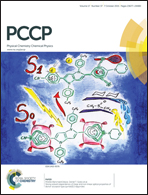Shapes for maximal coverage for two-dimensional random sequential adsorption
Abstract
The random sequential adsorption of various particle shapes is studied in order to determine the influence of particle anisotropy on the saturated random packing. For all tested particles there is an optimal level of anisotropy which maximizes the saturated packing fraction. It is found that a concave shape derived from a dimer of disks gives a packing fraction of 0.5833, which is comparable to the maximum packing fraction of ellipsoids and spherocylinders and higher than other studied shapes. Discussion why this shape is beneficial for random sequential adsorption is given.


![[a with combining cedilla]](https://www.rsc.org/images/entities/char_0061_0327.gif) k
k Please wait while we load your content...
Please wait while we load your content...